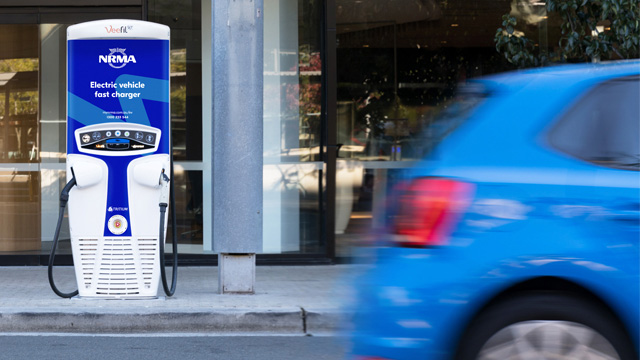In 2023, the electric vehicle (EV) landscape is undergoing a seismic shift, driven by the rapid expansion of fast charging networks. According to a recent report by InsideEVs, the number of fast chargers worldwide has increased by 40% over the past year alone. This surge is not just about numbers; it marks a significant leap in the way we think about EVs and their role in sustainable transportation. In this article, we’ll explore how fast charging networks are transforming the EV industry, making electric cars more accessible and practical for everyday use.
The Rise of Fast Charging Networks
Fast Chargers: The Backbone of EV Mobility
Fast charging networks are crucial to the widespread adoption of electric vehicles. Unlike traditional charging stations, fast chargers can power up an EV in as little as 30 minutes, allowing drivers to cover long distances without lengthy delays. Companies like Tesla, with its Supercharger network, and Electrify America are leading the charge, literally, by expanding their networks across continents.
- Tesla Superchargers: As of 2023, Tesla operates over 45,000 Superchargers globally, strategically positioned to cover major travel routes.
- Electrify America: With a goal to double its network by 2025, Electrify America is deploying ultra-fast chargers capable of delivering up to 350 kW, suitable for next-gen EVs like the Lucid Air and Porsche Taycan.
Government Initiatives and Collaborations
Governments worldwide are recognizing the importance of fast charging networks. The European Union, for example, has mandated that every 60 kilometers of major highways must have a fast charger by 2025. In the US, the Biden administration’s infrastructure plan includes $7.5 billion earmarked for EV infrastructure, aiming to install 500,000 chargers nationwide.
These initiatives are often in collaboration with private companies, ensuring that the network grows rapidly and efficiently. This public-private partnership is crucial for meeting the growing demand as more consumers switch to electric vehicles.
The Role of Technology in Fast Charging
Technological advancements are at the heart of this revolution. New battery technologies, such as solid-state batteries being developed by Toyota and QuantumScape, promise faster charging times and longer life spans. Meanwhile, advancements in charging technology, like bi-directional chargers, are setting the stage for EVs to not only consume energy but also supply it back to the grid, a concept known as vehicle-to-grid (V2G).
Practical Implications for EV Owners
How to Maximize Fast Charging Efficiency
For current and prospective EV owners, understanding how to use fast charging efficiently is key:
- Plan Your Route: Use apps like PlugShare or ChargePoint to locate fast chargers along your route.
- Optimize Charging: Avoid charging your battery to 100% with fast chargers regularly to extend battery life.
- Stay Updated: Keep your vehicle’s software updated for optimal charging performance.
Where to Find Fast Chargers
Fast chargers are now more accessible than ever. Here’s where you can typically find them:
- Highway Service Areas: Most fast chargers are located along highways, making long-distance travel feasible.
- Shopping Centers: Many malls offer fast charging stations, allowing you to recharge while you shop.
- Urban Areas: Cities are increasingly installing fast chargers to encourage urban EV use.
What to Compare When Choosing an EV
When considering an electric vehicle, it’s important to factor in charging capabilities:
- Charging Speed: Look for vehicles that support higher charging rates, such as the Hyundai Ioniq 5, which supports up to 800V charging.
- Battery Range: Consider the vehicle’s range on a single charge, with models like the Tesla Model S offering over 400 miles.
- Network Compatibility: Ensure that your chosen EV is compatible with the major fast charging networks in your region.
The Future of Fast Charging Networks
Innovations on the Horizon
The future of fast charging is bright, with several innovations on the horizon:
- Wireless Charging: Companies like WiTricity are developing wireless fast charging solutions that could eliminate the need for cables.
- Increased Charger Density: As more EVs hit the road, the density of chargers is expected to increase, reducing wait times and improving accessibility.
- Energy Management Systems: Advanced energy management systems will optimize the distribution of power, balancing the grid and preventing overloads.
Conclusion: The Road Ahead
Fast charging networks are undeniably revolutionizing the EV landscape in 2023. They are making electric vehicles more practical and appealing to a broader audience, thus accelerating the shift towards sustainable transportation. As these networks continue to expand and evolve, they will play a pivotal role in achieving global climate goals and reducing our reliance on fossil fuels.
Are you considering switching to an electric vehicle? Keep an eye on the developments in fast charging technology—it could be the game-changer you’ve been waiting for. With ongoing advancements and increased accessibility, the future of driving is electric, and the road ahead is charged and ready.
Stay informed and make the switch today—after all, the future is fast, and it’s electric!

